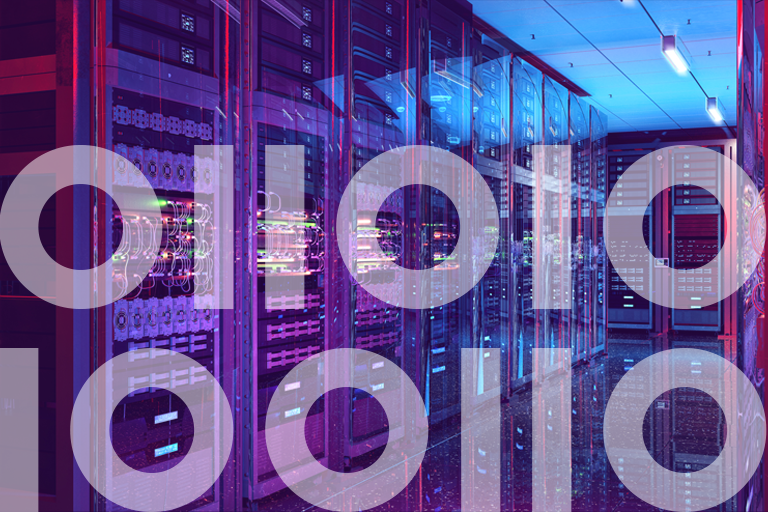Mainframes continue to serve as the IT workhorses for many of the largest organizations in the world. 14% of the Fortune 500 continue to trust mainframe systems to process their most mission-critical transactions. 92 of the leading world banks rely on them as well. In fact, 90% of credit card transactions are still processed on mainframe systems, and mainframes handle a total of around 2.5 billion transactions every day.
The scalability of these systems is truly impressive. They’re also extraordinarily cost-effective. Mainframes handle about 68% of IT workloads, yet they only account for 6% of total IT spend. A 2020 study by Deloitte revealed that over three-quarters of respondents whose organizations run mainframe systems considered them to have ongoing importance and relevance, even as their use of cloud computing services increases.

Multiple Paths to Mainframe Modernization
That leaves mainframes in an important strategic position, critical to the long-term success of many organizations. At the same time, many mainframe shops are striving to break down the barriers that stand between these reliable workhorse systems and the various other technology platforms they use.
Many organizations, for example, are seeking ways to accelerate the development of mobile applications, advanced analytics capabilities, and cloud-based services. All too often, developing these capabilities on a mainframe is simply not viable. A shortage of experienced mainframe programmers serves as a significant barrier, whereas developing modern cloud-based applications using object-oriented languages lends itself to a more agile approach.
Wholesale migration to the cloud can be a risky and expensive proposition. McKinsey estimates that approximately $100 billion dollars of migration spend will be wasted over the next three years. The company noted that 75% of cloud migration projects are over budget and 38% run behind schedule.
Watch Trust ’23
Trust ’23 – Data Integrity Summit
Over two virtual days, Trust ‘23 – the Data Integrity Summit, brought together global data leaders, analysts, and experts to share trends, challenges, and opportunities happening in the industry. Learn more about the power of data integrity: Watch Trust ’23 on Demand today.
Conversely, mainframe systems are extremely cost-efficient. Smart organizations will naturally look for the same kind of cost-efficiency in a modernization strategy.
Maggie Li, Principal Engineer for Mainframe Modernization Service at AWS, describes multiple approaches or “patterns” for modernization, including automated refactoring, re-platforming, data replication, and file transfer. Although AWS mainframe modernization services support all four of these scenarios, Li notes that the data replication pattern offers outstanding benefits with the high costs and risks associated with a “big bang” refactoring or re-platforming project.
The AWS partnership with Precisely enables the cloud platform provider to offer a high-value, rapid-ROI approach to companies seeking to leverage modern cloud services—without the long timeframes, high costs, and significant project risk that other modernization patterns demand.
The Power of Mainframe Data Replication
Mainframes typically hold decades of important business data. Data replication enables enterprises to replicate this data to AWS in near real time or batch mode.
This approach enables an organization to continue operating its mainframe system as the authoritative source of record, while real-time replication can push all database changes to the cloud virtually as soon as they occur. That enables up-to-date analytics and dashboards, timely fraud detection, and immediate ingestion of business data for real-time AI applications. It makes it possible to present fresh data to clients using customer-facing mobile apps or web services. Instead of struggling to develop such capabilities on the mainframe itself, companies can move quickly, developing new capabilities around cloud technologies, and delivering rapid results that generate immediate business value.
When one of North America’s oldest and most respected financial institutions wanted to offer an enhanced digital banking experience for its customers, the company sought to increase agility while improving the consistency and accuracy of data across its various customer channels, including email, phone, web, mobile, and others.
The company’s data integration architecture wasn’t up to the task. As a result, customers would typically reach out by phone to get the information they needed. For the bank, that was the most expensive channel to operate. Leaders at the bank also recognized that there were opportunity costs associated with the existing approach. They lacked a consistent view of data across the various channels, so they were missing opportunities to sell additional products and services to their clients. That meant substantial lost revenue.

If those two problems weren’t bad enough, the existing integration tools were expensive, costing the company close to a million dollars.
Precisely and AWS came together to offer the company a better solution that delivers consistent data while improving organizational agility and saving the bank money. Today, the company is leveraging Precisely Connect to replicate mainframe data in near real time to the AWS Cloud using Kafka as a streaming bus. As a result, the company was able to reduce its MIPS usage, driving down its mainframe operating costs while improving customer service and increasing upsell/cross-sell opportunities.
With AWS, the bank is able to get the scale that it needs, delivering data to the cloud in mere fractions of a second. The company is processing billions of transactions every hour, so it’s critically important that it has a data replication solution that is absolutely reliable and highly scalable. Connect reads from mainframe database logs, so it doesn’t negatively impact the performance of those mission-critical systems.
Bank leaders estimated that competitive alternatives would have required an additional 150 to 250 days to achieve similar results. The project also led to ongoing cost savings of approximately 6%.
The Importance of Integration to Data Integrity
When data resides in silos, it’s difficult to achieve a single, coherent view of reality. In the case of the bank described, that translated into poor customer service, higher costs, and lower organizational agility. Precisely and AWS delivered rapid results that broke down the walls between the bank’s mainframe system and other operational databases. The result is a coherent view across the entire enterprise, contributing to higher overall data integrity.
Mainframe modernization isn’t just about cost savings, and it doesn’t necessarily require the migration of existing applications and databases to the cloud. Data replication to the AWS cloud using Precisely Connect offers rapid results and outstanding ROI, without the high costs and significant risks associated with other mainframe modernization patterns. To learn more, check out Trust ’23 on Demand today.







